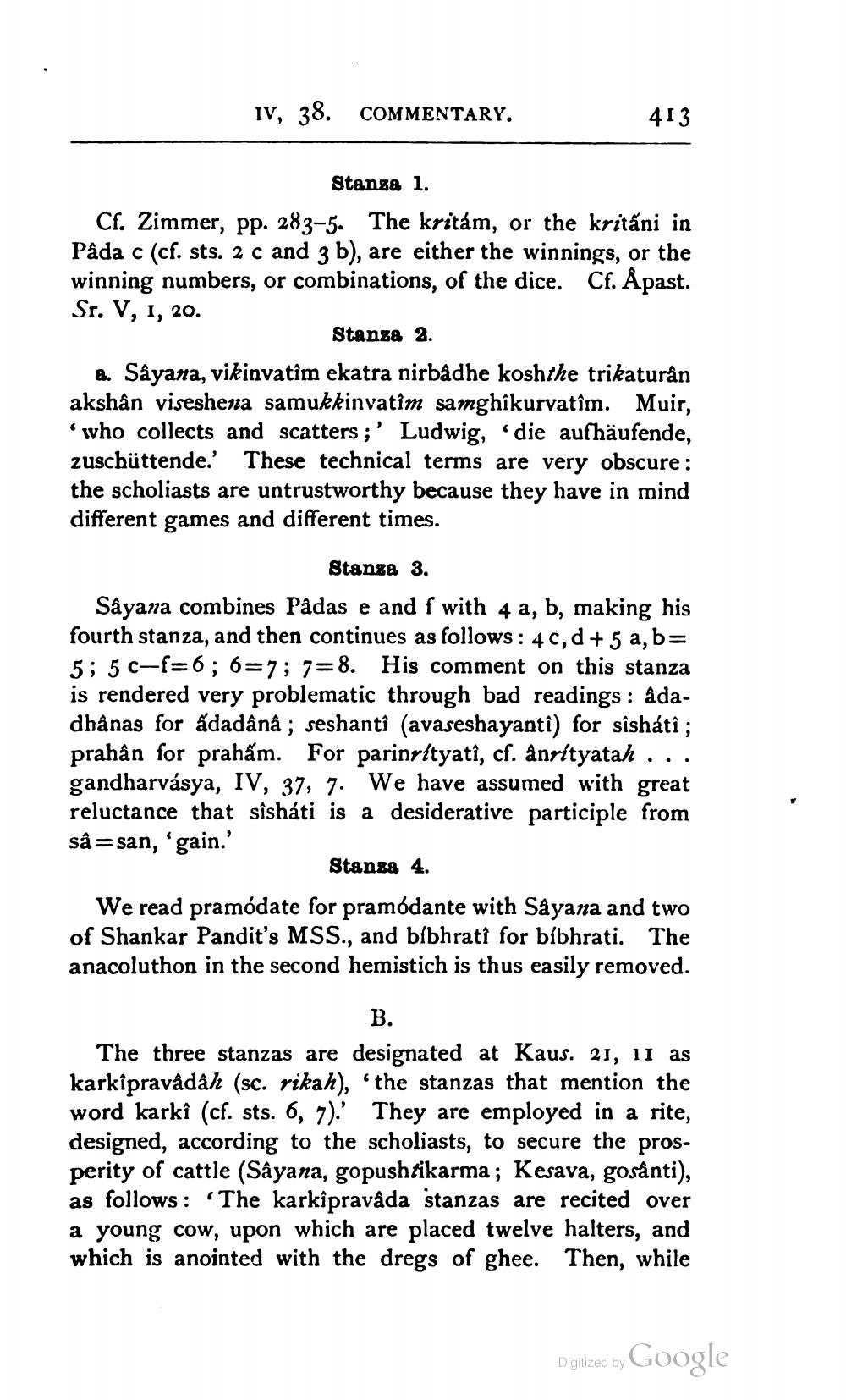________________
COMMENTARY.
413
Stanza 1. Cf. Zimmer, pp. 283-5. The kritám, or the kritáni in Pada c (cf. sts. 2 c and 3 b), are either the winnings, or the winning numbers, or combinations, of the dice. Cf. Åpast. Sr. V, 1, 20.
Stanza 2. a. Sayana, vikinvatîm ekatra nirbâdhe koshthe trikaturån akshân viseshena samukkinvatim samghỉkurvatîm. Muir, who collects and scatters ;' Ludwig, die aufhäufende, zuschüttende.' These technical terms are very obscure: the scholiasts are untrustworthy because they have in mind different games and different times.
Stanza 3. Sâyana combines Pâdas e and f with 4 a, b, making his fourth stanza, and then continues as follows: 40, d + 5 a,b= 5; 50-f=6; 6=7; 7=8. His comment on this stanza is rendered very problematic through bad readings : âdadhånas for adadânâ ; seshantî (avaseshayanti) for sîshátî; prahân for prahấm. For parinrltyatî, cf. anrltyatah ... gandharvásya, IV, 37, 7. We have assumed with great reluctance that sîsháti is a desiderative participle from sâ=san, 'gain.'
Stanga 4. We read pramódate for pramódante with Sayana and two of Shankar Pandit's MSS., and blbhrati for bíbhrati. The anacoluthon in the second hemistich is thus easily removed.
B. The three stanzas are designated at Kaus. 21, 11 as karkipravådâh (sc. rikah), the stanzas that mention the word karki (cf. sts. 6, 7).' They are employed in a rite, designed, according to the scholiasts, to secure the prosperity of cattle (Sâyana, gopushtikarma; Kesava, gosånti), as follows: "The karkipravada stanzas are recited over a young cow, upon which are placed twelve halters, and which is anointed with the dregs of ghee. Then, while
Digized by Google
Digitized by




